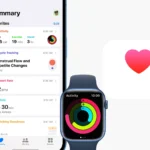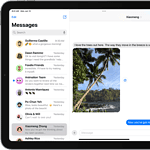Having trouble with your recent macOS Ventura 13.7.5 update? You’re not alone. Many Mac users face issues after updating their operating system, from apps that won’t open to slow performance and battery drain problems. The fastest way to fix many macOS Ventura problems is to restart your Mac, check for additional updates, and ensure you have enough storage space available.
These fixes might seem too simple, but they solve a surprising number of problems. When basic solutions don’t work, you may need to boot into Recovery Mode to use Disk Utility or try more advanced fixes. Apple regularly releases patches for known bugs, so checking for updates should always be your first step.
If you’re still having trouble, don’t worry. Most Ventura issues have clear solutions that don’t require technical skills. From fixing update failures to handling app compatibility problems, the right approach can get your Mac running smoothly again without much hassle.
Common macOS Ventura 13.7.5 Issues and Their Solutions
macOS Ventura 13.7.5 was released to patch numerous security vulnerabilities and maintain performance on supported Macs. But as with many updates, some users are encountering unexpected problems—from performance hiccups to connectivity issues. Below is a complete guide to the most common macOS Ventura 13.7.5 problems and how to fix them.
1. Installation Issues
Problem: The update fails to install, gets stuck, or your Mac doesn’t boot afterward.
Fixes:
- Check Compatibility: Make sure your Mac model supports macOS Ventura 13.7.5.
- Free Up Space: The update may require several gigabytes of free space.
- Use Safe Mode: Boot into Safe Mode and retry the installation. This limits background processes.
- Reset NVRAM and PRAM: Restart your Mac and hold Option + Command + P + R to clear old settings that may interfere.
2. System Slowness After Updating
Problem: Your Mac feels slower, apps take longer to launch, or animations are laggy.
Fixes:
- Restart Your Mac: A full reboot clears out temporary files and post-installation processes.
- Manage Login Items: Go to System Settings > General > Login Items and remove unnecessary background apps.
- Reset SMC (Intel Macs): This can resolve power, fan, and performance issues.
- Use Activity Monitor: Identify and quit resource-heavy apps or processes.
3. Wi-Fi or Bluetooth Not Working
Problem: Connection drops, won’t connect, or performance is unstable.
Fixes:
- Toggle Wi-Fi/Bluetooth Off and On: Simple but often effective.
- Forget and Rejoin Network: Remove the problematic network and reconnect with your credentials.
- Reset Network Settings: Delete system network configuration files (make backups first).
- Check Router Firmware and Settings: Especially if other devices are working fine.
4. Apps Crashing or Refusing to Open
Problem: Apps won’t launch, freeze, or crash frequently after updating.
Fixes:
- Update All Apps: Developers often release patches following a macOS update.
- Reinstall Problematic Apps: Delete and reinstall apps causing issues.
- Run in Rosetta Mode (for Intel-based apps on Apple Silicon): Right-click the app, select Get Info, and check “Open using Rosetta” if needed.
5. Battery Drain
Problem: Battery life is noticeably worse after updating.
Fixes:
- Check Battery Usage: Go to System Settings > Battery to identify power-hungry apps.
- Disable Background Features: Turn off Background App Refresh and Spotlight indexing if unnecessary.
- Turn Off Location Services: Disable for apps that don’t need it.
- Use Low Power Mode: Available in newer macOS versions to reduce energy use.
6. External Devices Not Recognized
Problem: USB devices, printers, or external drives aren’t detected.
Fixes:
- Reconnect and Restart: Unplug the device, restart your Mac, and reconnect.
- Try Different Ports/Cables: A faulty port or cable may be the real issue.
- Check for Updated Drivers or Firmware: Especially for printers and audio interfaces.
- Reset SMC: Useful for fixing hardware recognition issues.
7. Mac Overheating or Fan Running Loud
Problem: Mac feels hot, or fans ramp up even with light usage.
Fixes:
- Check CPU Usage: Use Activity Monitor to find apps causing CPU spikes.
- Ensure Proper Ventilation: Avoid using your Mac on soft surfaces like a bed or couch.
- Close Heavy Apps: Browser tabs, video editors, or games can stress your system.
- Reset SMC: Can help regulate temperature and fan behavior.
8. Time Machine Backup Errors
Problem: Backups won’t start, fail mid-way, or drives aren’t recognized.
Fixes:
- Check Drive Format and Space: Make sure the backup disk is HFS+ or APFS and has free space.
- Reconnect and Reselect the Drive: Go to System Settings > Time Machine and choose your drive again.
- Run First Aid in Disk Utility: To repair any disk errors preventing backups.
- Exclude Large or Problematic Files: Use Time Machine settings to omit unnecessary files.
9. Spotlight Search Not Working
Problem: Spotlight returns incomplete results or doesn’t find recent files.
Fixes:
- Rebuild Index: Go to System Settings > Siri & Spotlight > Spotlight Privacy. Add your disk, wait a few seconds, then remove it to trigger reindexing.
- Check Disk Space and Permissions: Low disk space or permission issues can cause Spotlight problems.
10. Kernel Panics or System Crashes
Problem: Mac crashes, freezes, or reboots unexpectedly.
Fixes:
- Check for Failing Hardware: Run Apple Diagnostics by holding D at startup.
- Disconnect External Devices: Faulty peripherals can cause kernel panics.
- Look for Outdated Kexts or Extensions: Old kernel extensions from third-party software may not be Ventura-compatible.
- Reinstall macOS: If all else fails, a clean install might resolve persistent low-level issues.
By methodically troubleshooting these known problems, you can regain system stability and enjoy the benefits of macOS Ventura 13.7.5 without the headaches. If issues continue after trying the steps above, contacting Apple Support or visiting a certified technician is your next best move.
Key Takeaways
- Restart your Mac and check for additional software updates to fix most common Ventura issues quickly.
- Free up storage space and update apps to prevent crashes and performance problems.
- Use Recovery Mode tools when facing serious system errors or update failures.
Identifying Common Issues in macOS Ventura 13.7.5
macOS Ventura 13.7.5 users face several common problems that can disrupt daily workflow. These issues typically affect web browsing performance in Safari, app compatibility with the updated system, and security vulnerabilities that need immediate attention.
Troubleshooting Safari 18.4 Problems
Safari 18.4 in macOS Ventura 13.7.5 often experiences performance hiccups that frustrate users. Common issues include pages loading slowly, unexpected crashes, and bookmarks disappearing without warning.
To fix slow loading times:
- Clear Safari cache by going to Safari > Settings > Privacy > Manage Website Data
- Disable unnecessary extensions that might drain resources
- Reset Safari completely as a last resort
Many users report that Safari freezes when multiple tabs are open. This typically happens because of memory issues. Closing unused tabs and limiting active tabs to fewer than 15 can improve performance significantly.
If Safari won’t open at all, try:
- Force quitting the application
- Restarting your Mac
- Checking for software conflicts with security programs
For those experiencing problems with specific websites, switching temporarily to Firefox Focus or Chrome 135.0.7049.35 can help identify if the issue is Safari-specific.
Resolving Compatibility Issues with Apps
App compatibility remains a key challenge in macOS Ventura 13.7.5. Many users find that older software stops working properly after updating.
Microsoft Office for Mac users often encounter crashes when opening documents or spreadsheets. The quick fix involves:
- Updating Office to the latest version
- Repairing disk permissions
- Reinstalling problematic apps
Professional creative apps may experience unexpected shutdowns. Adobe users report issues with plugins and extensions not functioning correctly after the update.
For apps that won’t launch at all:
- Check if the developer offers a Ventura-compatible version
- Try running First Aid in Disk Utility
- Remove app preference files from Library/Preferences folder
Some apps might need special permissions in System Settings > Privacy & Security. If an app demands access to folders, camera, or microphone but keeps asking repeatedly, granting persistent permissions can solve this frustrating loop.
Fixing Security Vulnerabilities and Patches
macOS Ventura 13.7.5 addresses several security issues, but some vulnerabilities may remain or emerge after installation. Users should actively check for and install supplemental updates.
The most critical security issues affect:
- Kernel memory protection
- Safari privacy features
- System file integrity
Many users report Software Update getting stuck when trying to install security patches. This typically happens due to incomplete downloads or corrupted installation files.
To ensure proper security patch installation:
- Use wired internet connections for updates
- Clear download cache folders
- Use Terminal to force updates when needed
Security tools sometimes conflict with Ventura’s built-in protections. Third-party antivirus programs might need reconfiguration to work properly with the updated system.
For persistent security alerts about “unverified apps,” right-click the app and select “Open” instead of double-clicking. This tells macOS you understand the risk and want to proceed anyway.
Advanced Solutions and System Management
When simple fixes don’t solve your macOS Ventura 13.7.5 problems, more advanced approaches may be necessary. These technical solutions can address deeper system issues and help maintain your Mac’s performance over time.
Performing System Updates and Management
Keeping your system updated is crucial for fixing bugs in macOS Ventura 13.7.5. Check for any available updates by clicking the Apple menu and selecting “System Settings” then “General” followed by “Software Update.”
If you’re experiencing persistent issues, consider these management techniques:
- Reset the System Management Controller (SMC) on Intel-based Macs to fix power, battery, and fan problems
- Reset NVRAM/PRAM to resolve issues with display resolution, startup disk selection, and system sounds
- Boot into Safe Mode by holding the Shift key during startup to isolate if third-party software is causing problems
Create a new admin user account to test if your problems are profile-specific. This can help determine if the issue is with your user settings or the system itself.
For more complex situations, advanced troubleshooting procedures like repairing disk permissions or reinstalling macOS while preserving your data might be necessary.
Utilizing Time Machine for Backup and Recovery
Time Machine provides a safety net when fixing macOS Ventura issues. Before attempting major system changes, ensure you have a current backup.
- Connect an external drive to your Mac
- Go to System Settings > Time Machine
- Turn on Time Machine and select your drive
If your Mac is experiencing problems after an update, you can restore from a Time Machine backup created before the update.
For selective recovery, enter Time Machine by clicking its icon in the menu bar and selecting “Enter Time Machine.” Navigate through your backup history using the timeline on the right edge of your screen.
You can also use Time Machine to migrate to a new Mac or restore your entire system after reinstalling macOS. This preserves your apps, files, and settings exactly as they were before the issues began.
Seeking Apple Support for Persistent Issues
When self-help methods fail, Apple’s support channels offer expert assistance. The Apple Support website provides troubleshooting articles specifically for macOS Ventura problems.
Schedule an appointment at an Apple Store Genius Bar through the Apple Support app or website. Bring your Mac and any external drives with backup data.
For remote help, contact Apple Support by:
- Phone: Call the support line for real-time assistance
- Chat: Use the Apple website for text-based support
- Twitter: Reach out to @AppleSupport
Before contacting support, gather information about your issue including when it started and what steps you’ve already tried. Also check if your Mac is still under warranty or covered by AppleCare for potential free repairs.
If necessary, Apple technicians can help you downgrade to macOS Monterey if Ventura continues to cause problems that can’t be resolved.
Frequently Asked Questions
Updating to macOS Ventura 13.7.5 can sometimes bring unexpected issues. Here are answers to common questions that can help you solve problems quickly and get your Mac running smoothly again.
What steps can I take to troubleshoot a failed macOS Ventura installation?
If your macOS Ventura installation fails, try these simple fixes first. Restart your Mac as this often resolves minor software glitches that might be blocking the installation.
Check your internet connection to ensure it’s stable during the download and installation process. Poor connectivity can cause failed installations.
You can also try to boot into Recovery Mode by holding Command + R (for Intel Macs) during startup. From there, you can use Disk Utility to check and repair any disk issues.
How can I determine if my Mac is compatible with macOS Ventura?
macOS Ventura is compatible with Macs from 2017 or newer. This includes iMac Pro (2017 and later), MacBook Air (2018 and later), MacBook Pro (2017 and later), and Mac mini (2018 and later).
You can check your Mac model by clicking the Apple icon in the top-left corner and selecting “About This Mac.” The year of your Mac will be displayed there.
If your Mac is older than 2017, you likely cannot install Ventura and should stick with an earlier version of macOS that supports your hardware.
What should I do if my Mac becomes slow after the Ventura update?
If your Mac slows down after updating to Ventura, first check for app updates. Outdated apps may not be fully compatible with the new system.
Clear temporary files and caches to free up space. A cluttered system can significantly impact performance.
Monitor resource usage with Activity Monitor to identify any processes consuming excessive CPU or memory. Force quit these applications if necessary.
Sometimes a simple restart can clear up memory issues and improve performance right away.
Are there common issues associated with macOS Ventura 13.7.5 and how can they be addressed?
Battery drain is a common issue with Ventura updates. Fix this by checking Battery settings and turning off background processes you don’t need.
Wi-Fi connectivity problems can occur after updating. Try turning Wi-Fi off and on again, or reset your network settings if problems persist.
Some users report Bluetooth devices disconnecting randomly. Removing and re-pairing these devices often resolves this issue.
App crashes might happen with incompatible software. Make sure all your apps are updated to versions that support Ventura 13.7.5.
What precautions should I take before downloading and installing macOS Ventura updates?
Always back up your Mac using Time Machine or another backup solution before any major update. This ensures you can recover your data if something goes wrong.
Check available storage space—you’ll need at least 20GB of free space for the update to install properly.
Verify that your critical apps are compatible with the new version before updating. Visit developers’ websites to confirm compatibility.
Connect your Mac to a power source during the update to prevent battery drainage interrupting the installation.
How can I resolve the problem if macOS Ventura is not installing after an erase?
If Ventura won’t install after erasing your disk, try creating a bootable installer on a USB drive. This allows you to install the OS without relying on internet recovery.
Check if your internet connection is stable as the installation requires downloading files from Apple servers.
Ensure your Mac’s firmware is up to date by running any available updates before attempting the installation again.
If these steps don’t work, you might need to uninstall problematic software that could be causing conflicts with the installation process.







